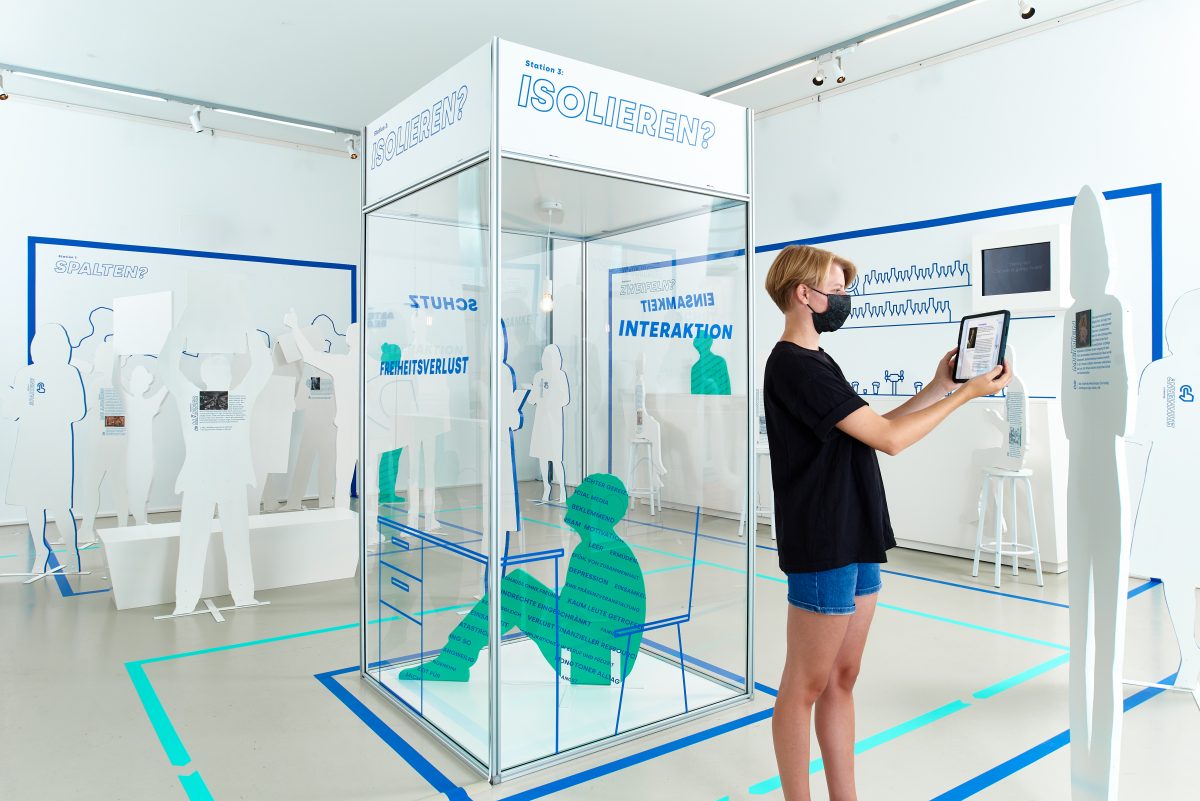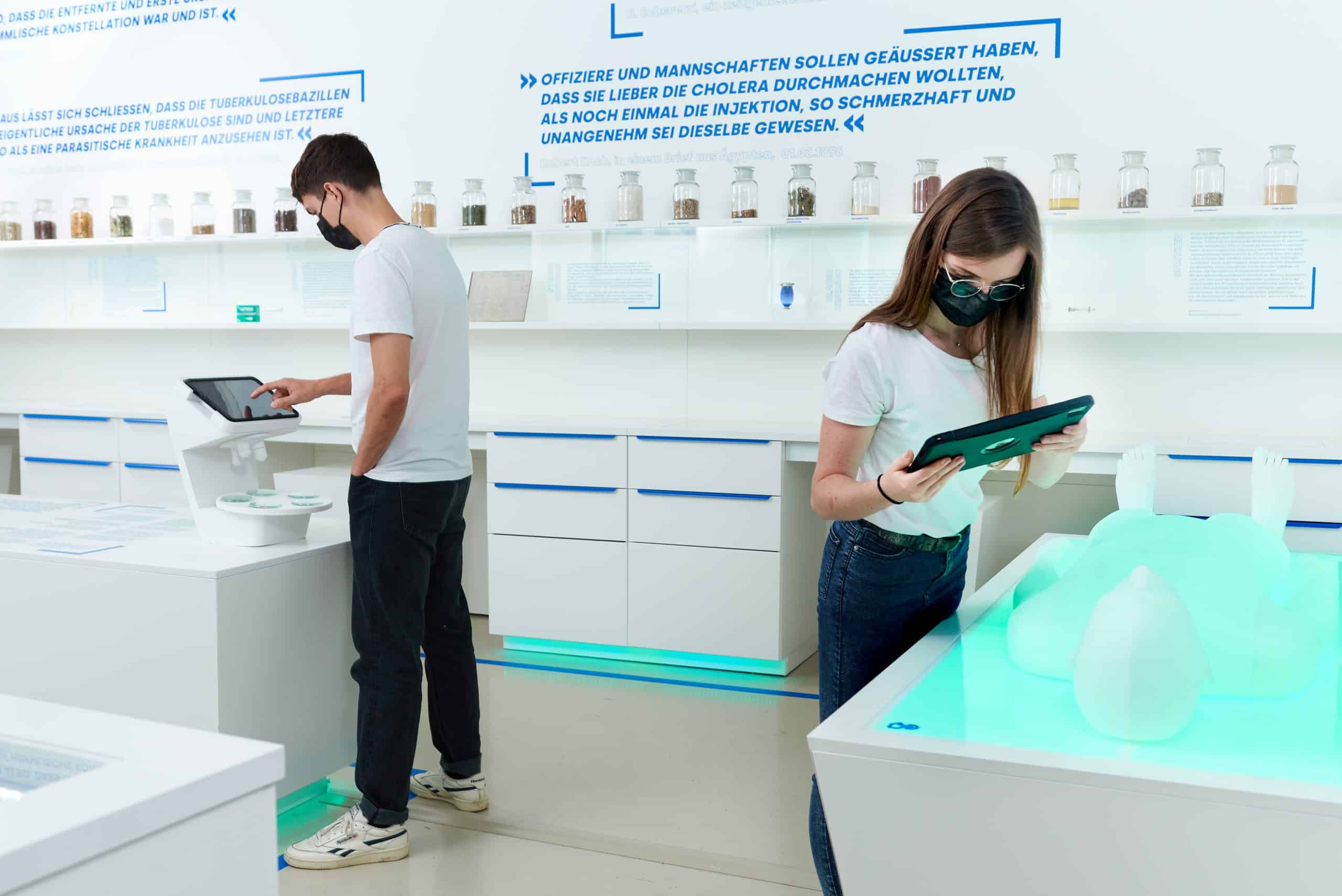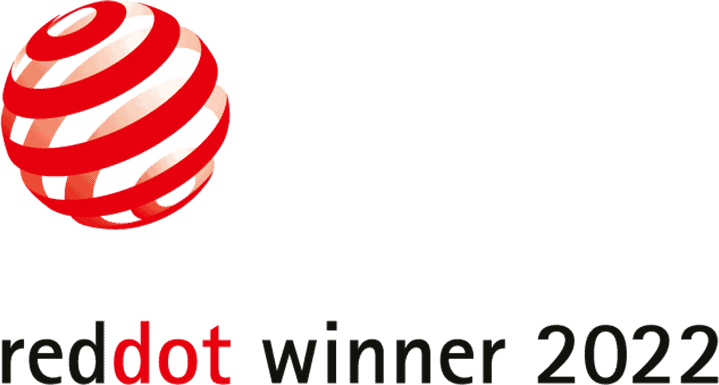STAYIN’ ALIVE – living with epidemics.
Duration
29 July 2021 – 3 October 2021
Location
Turm zur Katz, Konstanz
Participants
University of Konstanz, HTWG Konstanz,
Trossingen University of Music
The pandemic – a topic currently holding the entire world in suspense. A look into history teaches us: pandemics and epidemics are part of human history. They persist and affect all areas of life. The sudden and far-reaching outbreak of epidemics, which created chaos and an atmosphere of uncertainty and insecurity, can be traced through various historical sources across the ages. Nevertheless, many of these pandemics are wrongly considered extinct or, like the plague, are labeled as purely medieval diseases. Thus, the last major pandemics, some of which occurred barely 100 years ago and claimed millions of lives, have only returned to cultural memory through the outbreak of the coronavirus. Yet pandemics such as COVID-19 affect the health of all people and have far-reaching consequences. They shift the entire social and political structure and influence many aspects of public awareness and coexistence.
It is against this socially, politically, and medically highly topical backdrop that the exhibition project “STAYIN ALIVE – living with epidemics” is set. The exhibition offers visitors the opportunity to engage more deeply with both current and past pandemics and how they have been dealt with from antiquity to the present. How is – and was – reporting done and communication handled in times of a pandemic? How was research conducted, and how was the resulting medical knowledge tested by those in power in efforts to combat epidemics? And what impact did this have on society? Using both analog and digital methods, the exhibition addresses these four inseparable aspects of pandemics across four floors: digitization, medicine, politics, and, not least, society. In doing so, it provides insights into the handling of pandemics throughout world history, offering visitors a fresh and valuable perspective on the ongoing coronavirus pandemic.
A | Digitization
The reception area on the ground floor marks the entry point to the exhibition. Here, tablets equipped with the exhibition app are handed out, enhancing the exhibition experience from that point on. Through screens and tablets built into the tables, visitors gain insights into the other floors and receive initial information about the options available to people today in comparison to past pandemics.
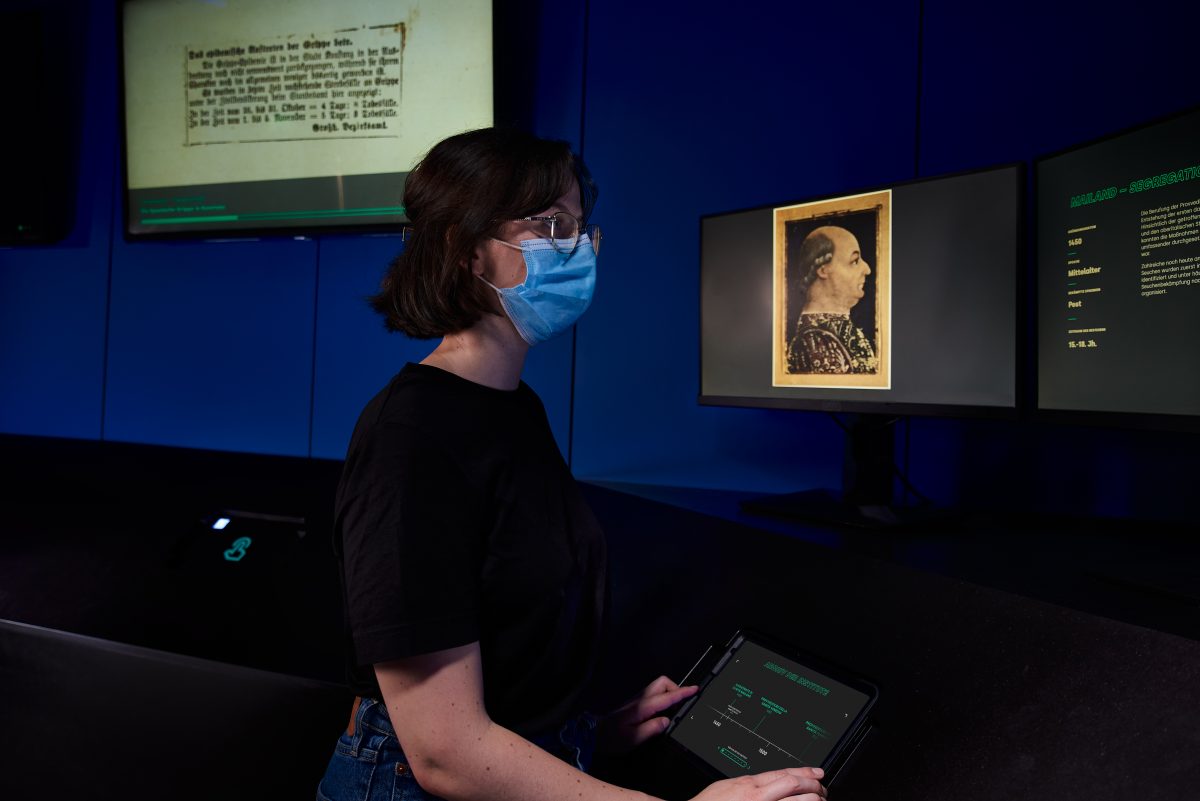
B | Research
On the first floor, the historical development of medical pandemic research is explained, and the clinical profiles of various diseases are examined in greater detail. This theme is expanded through tables in the room where visitors can use tablets and augmented reality to explore symptoms on the human body or analyze the differences between bacteria and viruses.
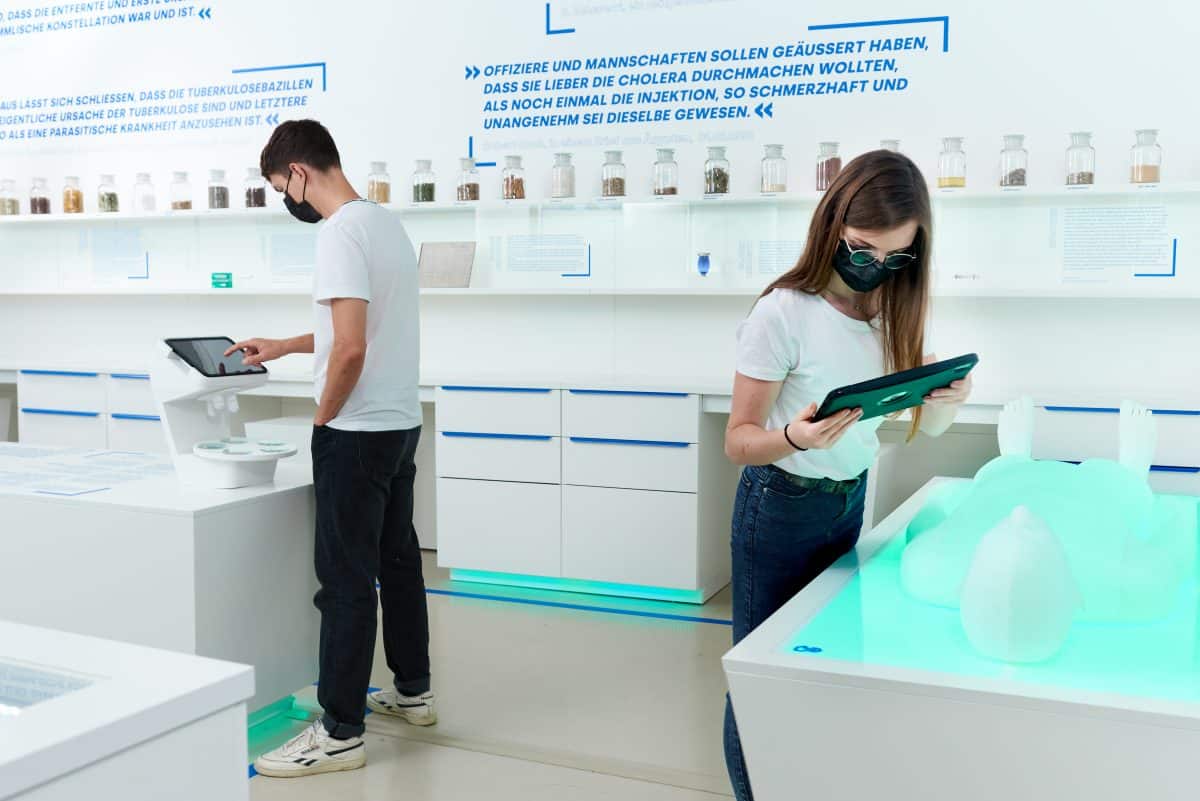
C | Management
Politics is the theme of the second floor. The transmission routes of past epidemics are explained and compared with those of the coronavirus. Key actors and measures implemented then and now can be explored in more detail. At the table in the center of the room, visitors can use a simulation to step into the role of a governing figure and engage with the topic in a playful way.
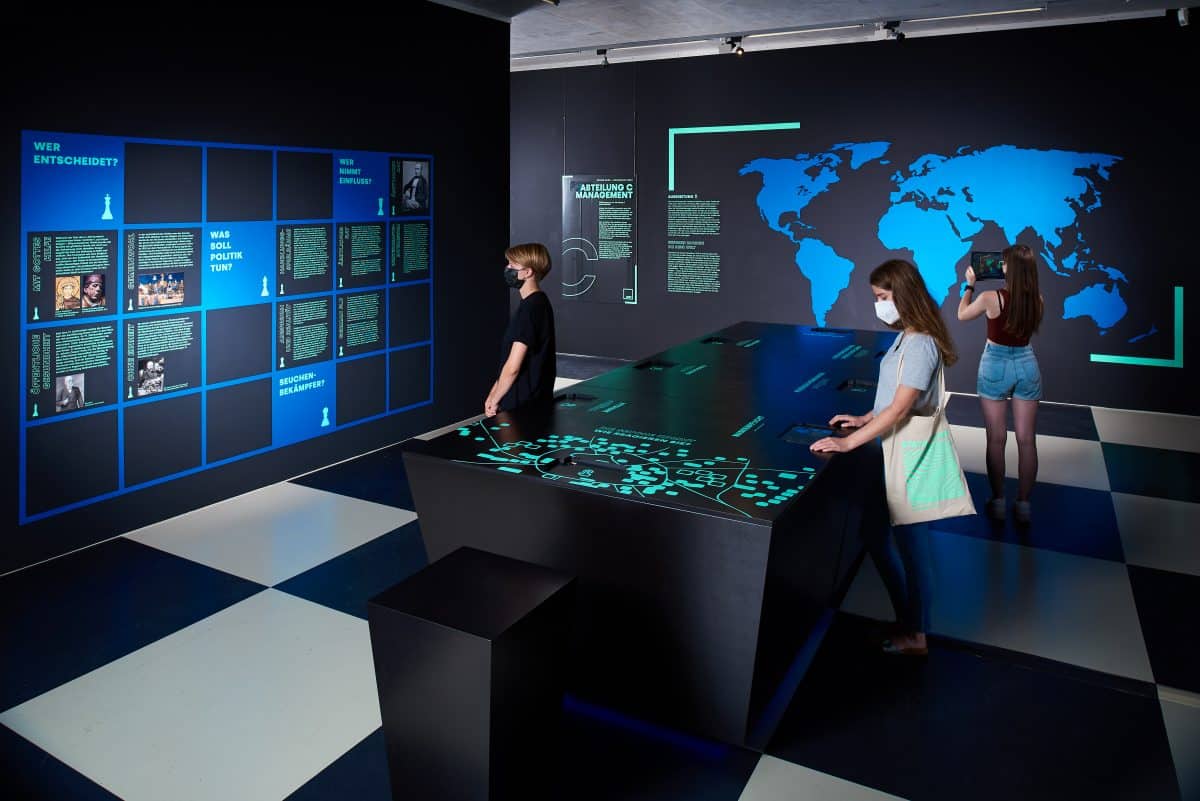
D | Living Lab
On the third floor, the impact of pandemics on society is examined. In five experimental setups, “test subjects” are analyzed and their past behavior studied. The phenomena explored include, for example, the division of society, but also solidarity and the culture of remembrance. Visitors can access information about past reactions and connect these with their own experiences of the current pandemic.
